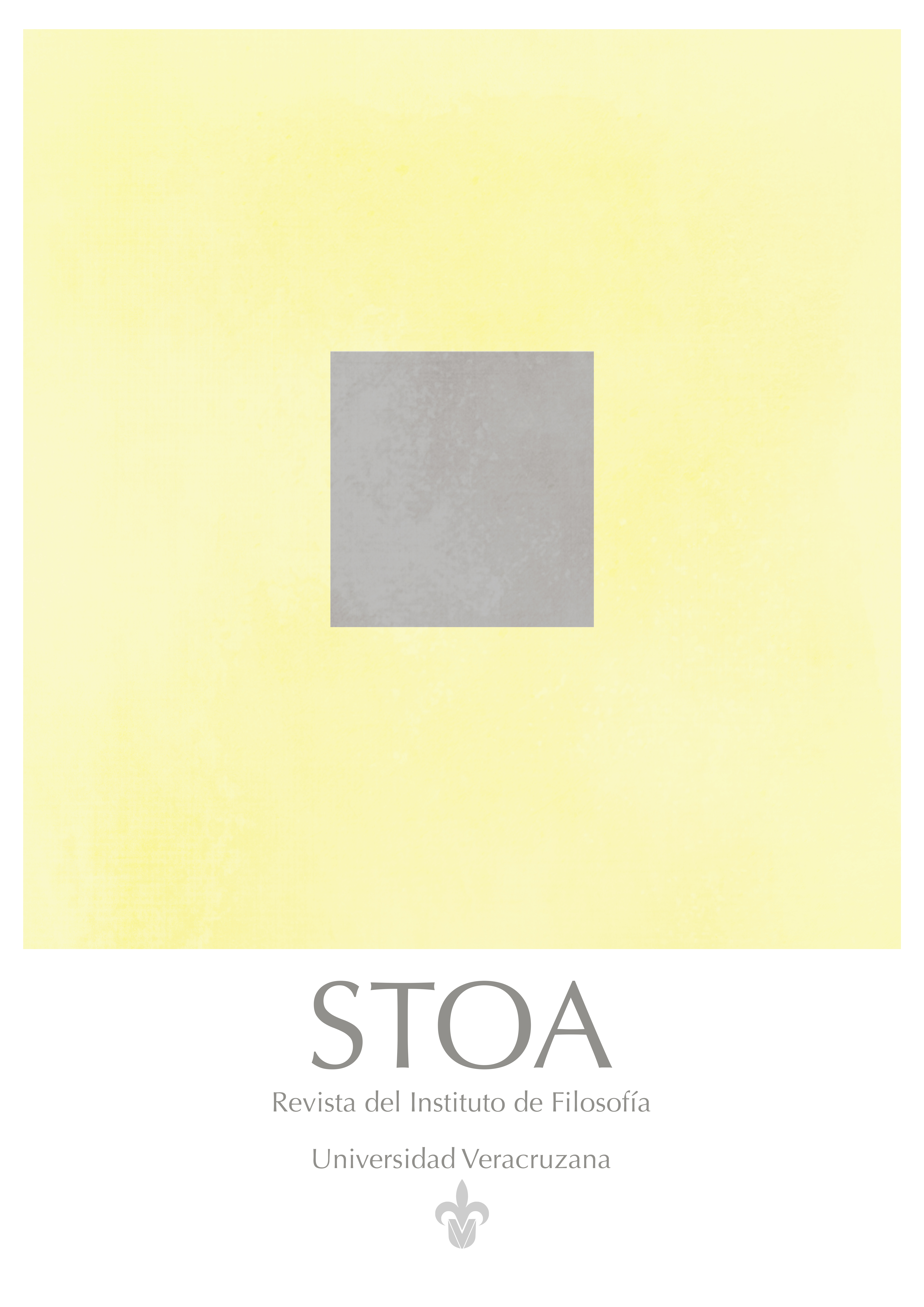Abstract
La teoría de la materia de René descartes incluye una explicación sobre el origen de los elementos en la que aparece expresado por primera vez en su formulación moderna el concepto de éter y proyectada su metafísica de la extensión. El presente texto expone las líneas generales de la mencionada teoría para mostrar cómo el mecanismo cartesiano y la metafísica de la extensión guardan una armonía en términos de metateoría y movimiento y prefiguran de manera definitiva algunas de las propiedades e interpretaciones entre ellas las teológicas, que el éter conservara en posteriores teorías.STOA is a biannual publication edited by the Institute of Philosophy of the Universidad Veracruzana, Tuxpan, No. 29, Frac. Veracruz, C.P. 91020, Xalapa, Ver., Tel. 8154285, http://www.uv.mx/filosofia. Responsible editor: Jesús Turiso Sebastián. Exclusive Use Rights Reservation No. 04-2008-121012511200-203, granted by the Copyright Reservation Directorate of the National Institute of Copyright of the Secretariat of Public Education, ISSN: 2007-1868. Responsible for the last modification of this issue: Jesús Turiso Sebastián, Tuxpan, No. 29, Frac. Veracruz, C.P. 91020, date of last modification August 5, 2011. Distribution and digital support by the Academic Software Development Department of the Universidad Veracruzana.
The opinions expressed by the authors do not necessarily reflect the position of the editor of the publication. Reproduction by any means of the texts published in this journal may be done as long as the source is cited, including the name of the author, the name and number of the journal, and its electronic address. For more information write to revistastoa@uv.mx.
Revista Stoa is a completely free publication, with no cost for processing or receiving articles and free access.
This work is under a Creative Commons Attribution-NonCommercial-ShareAlike 4.0 International license.

